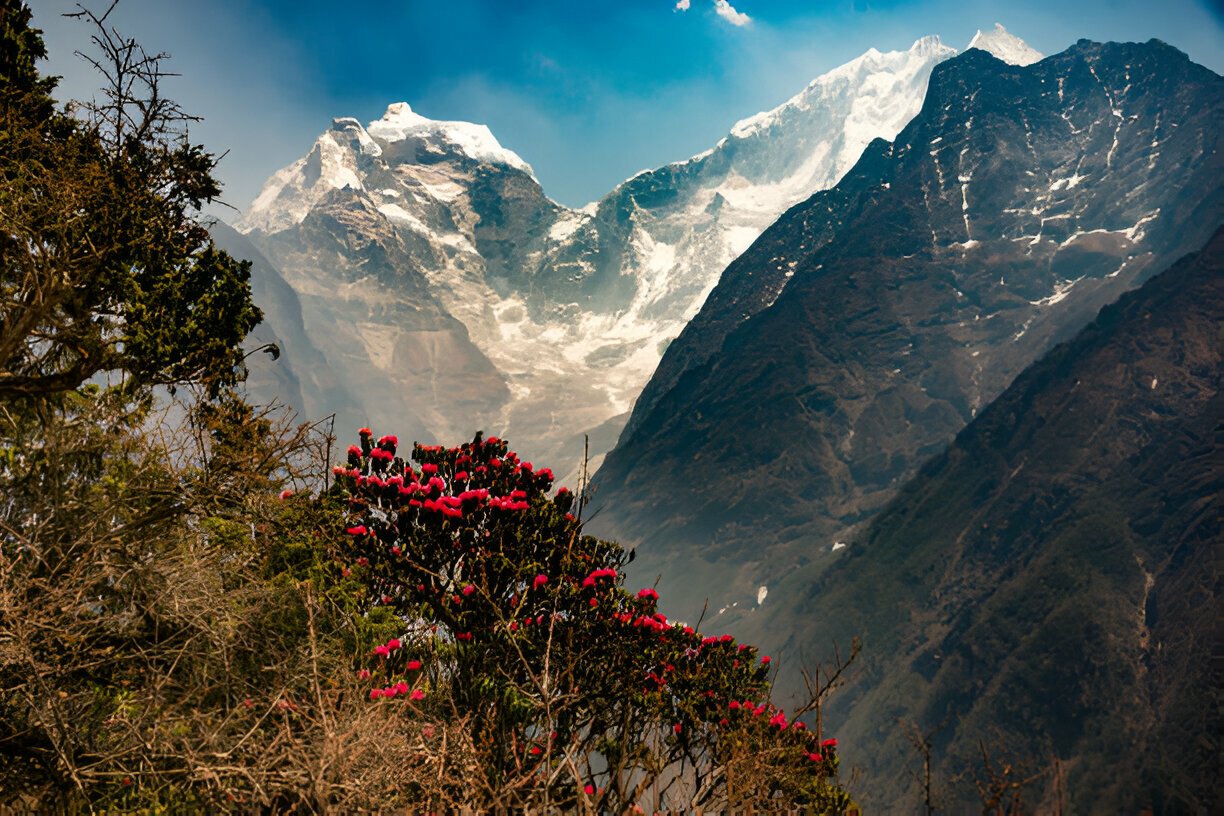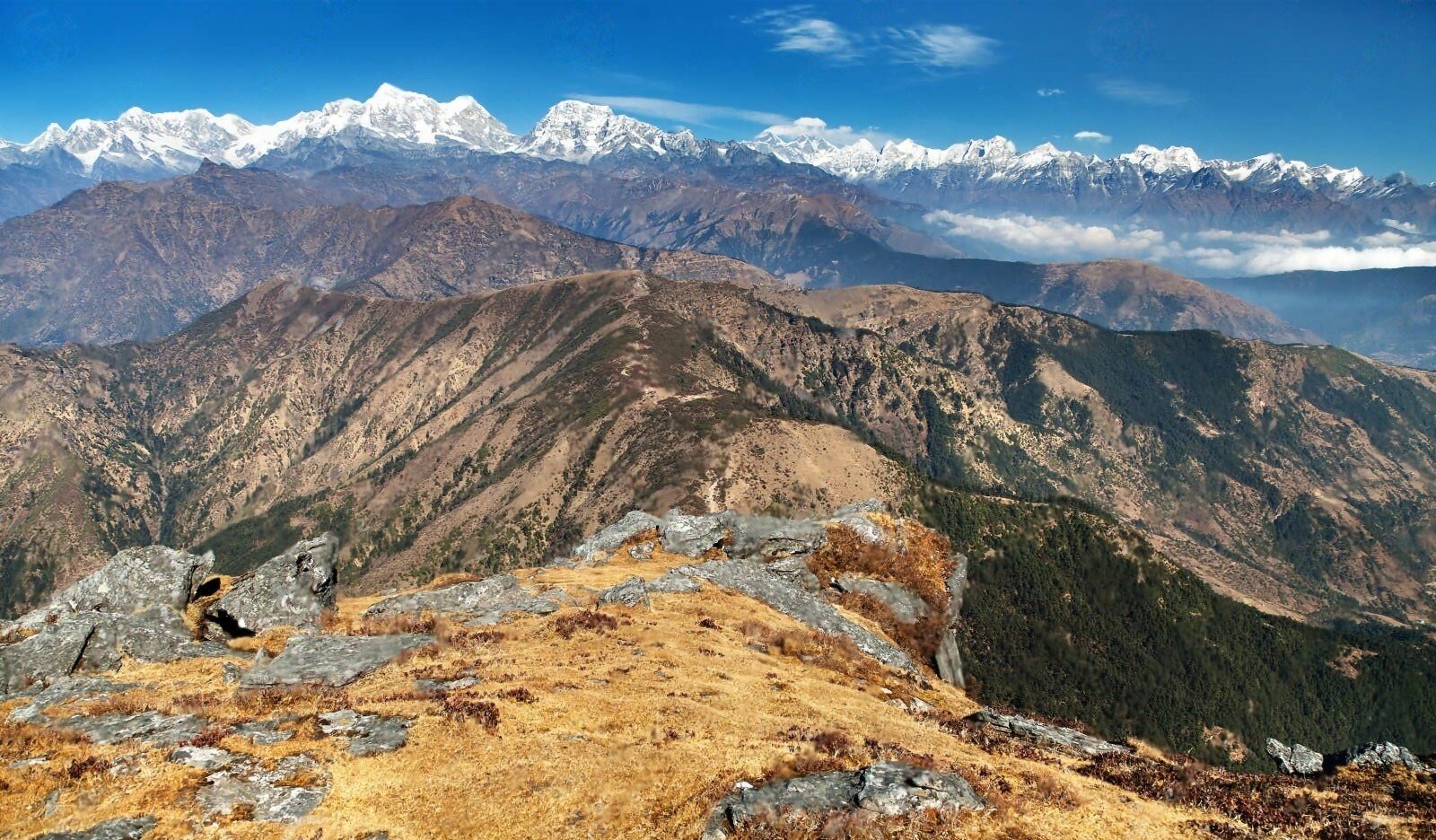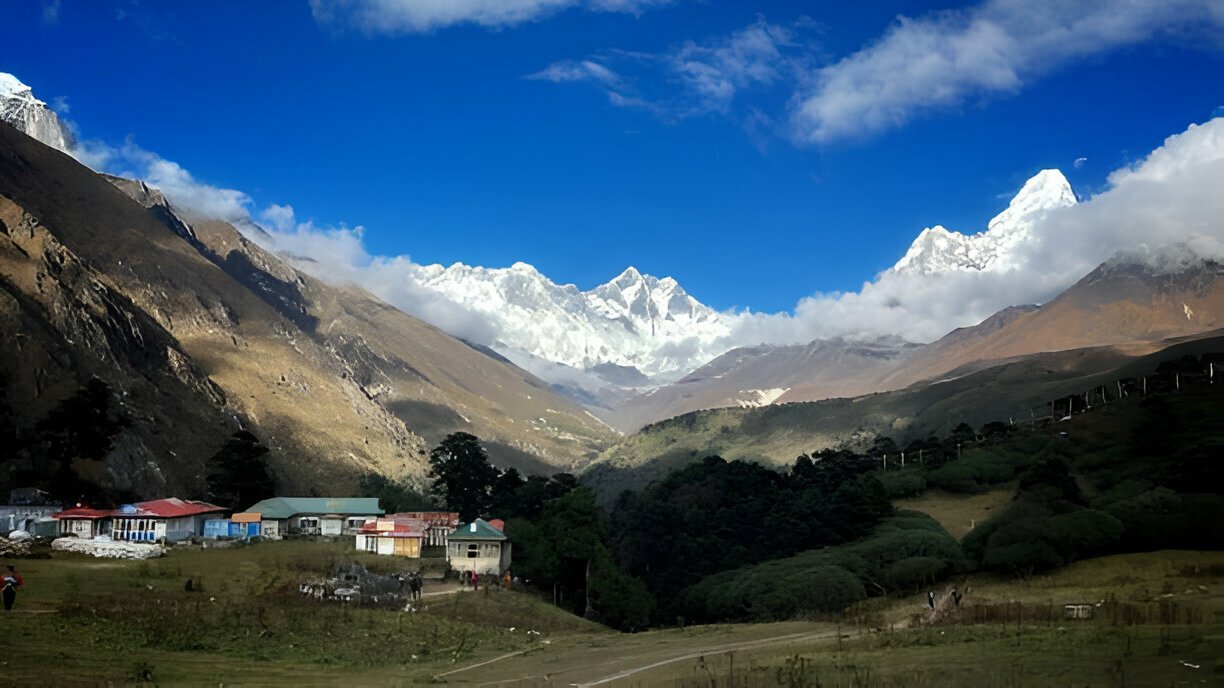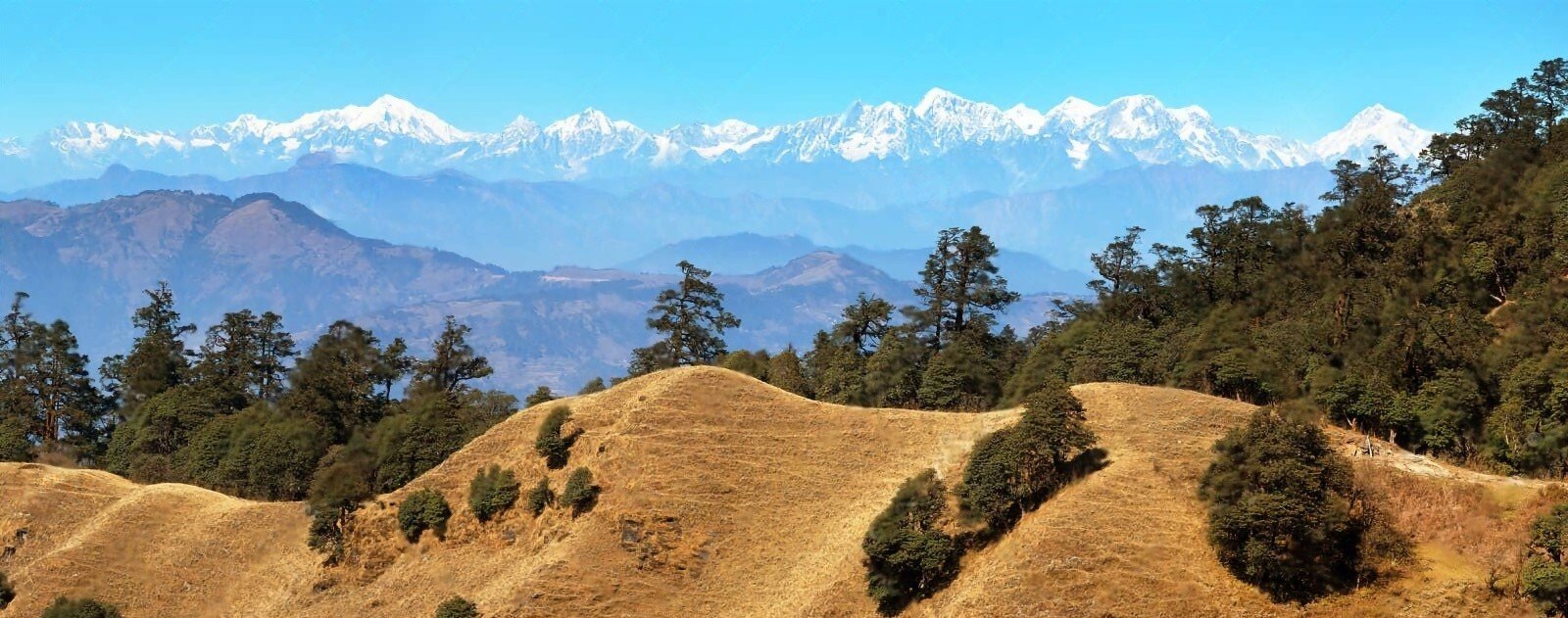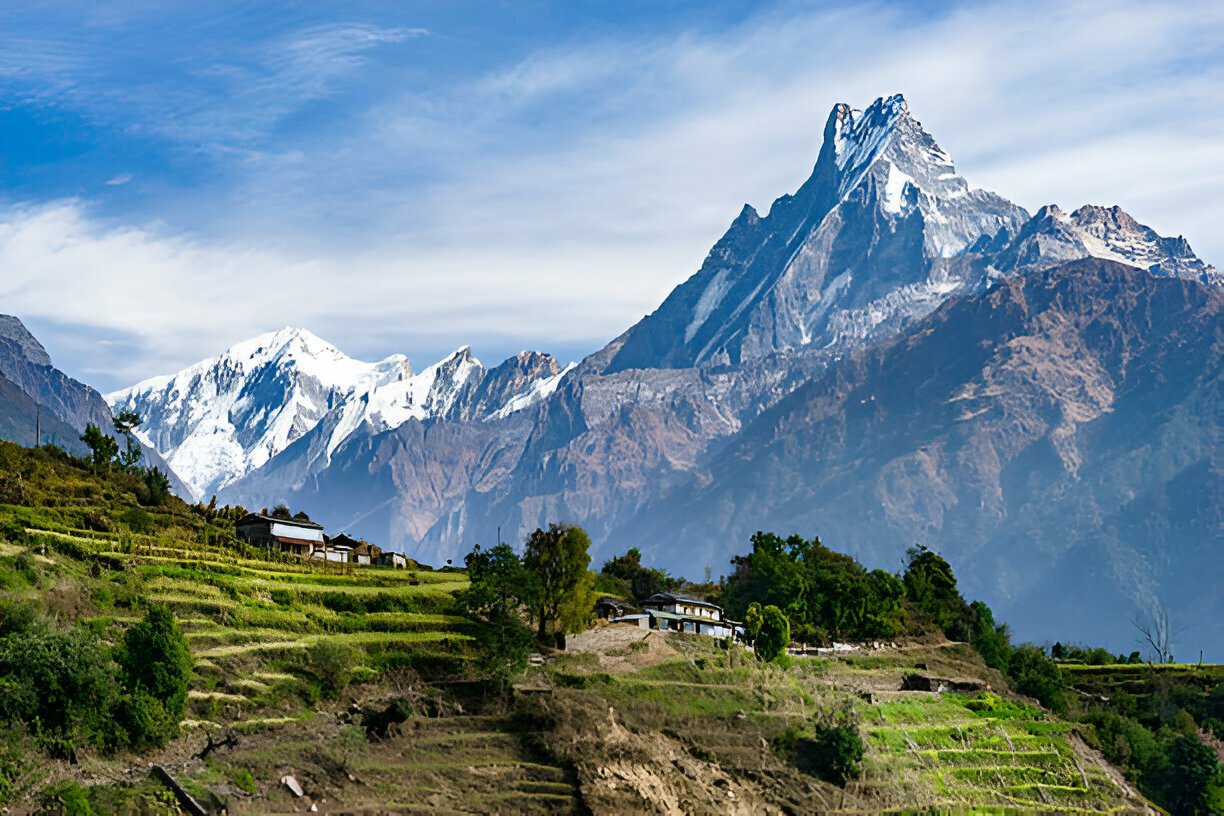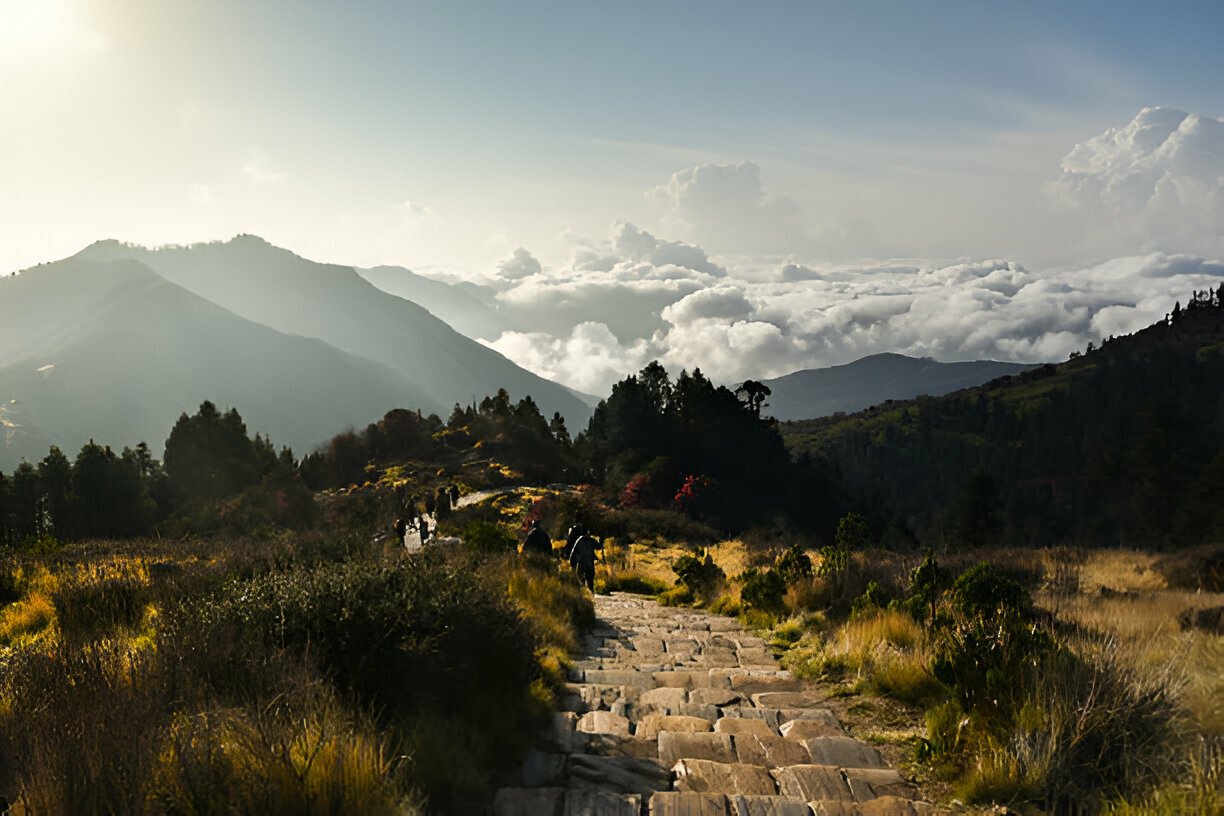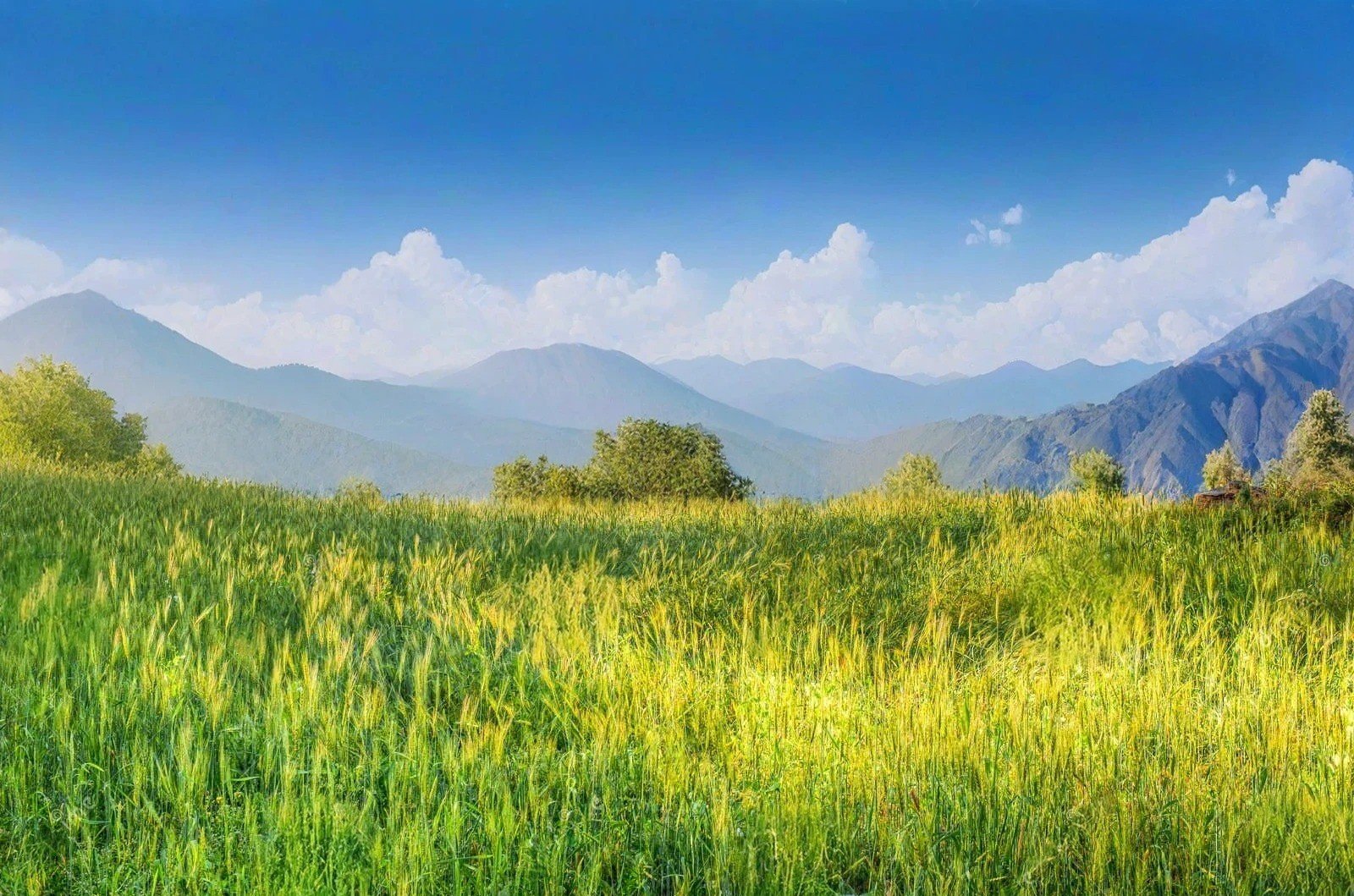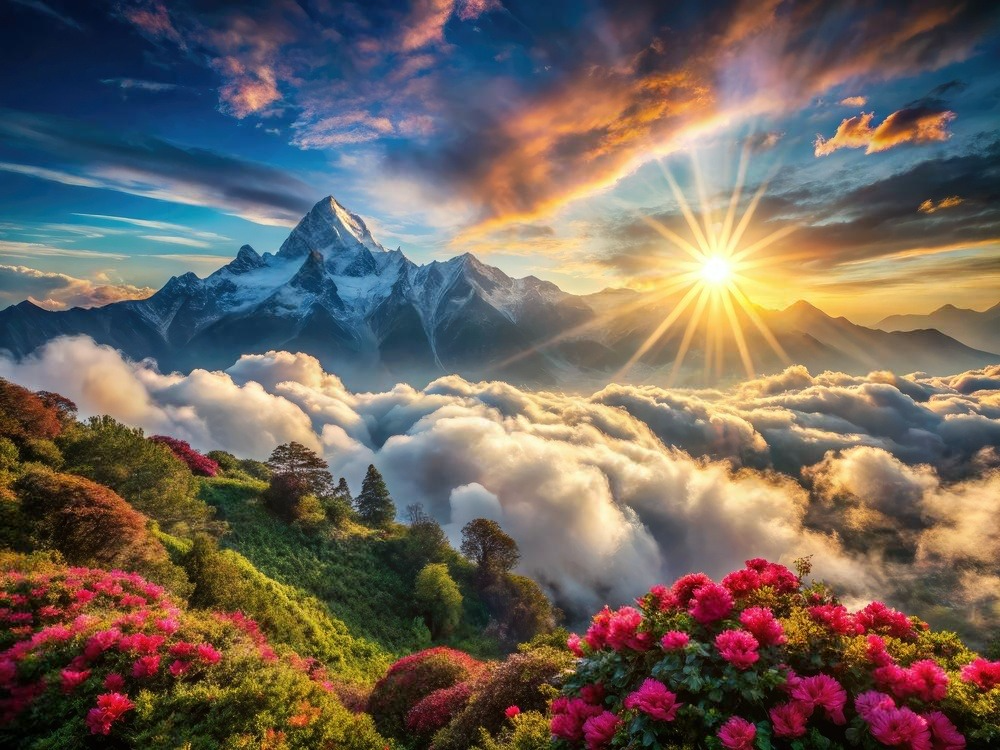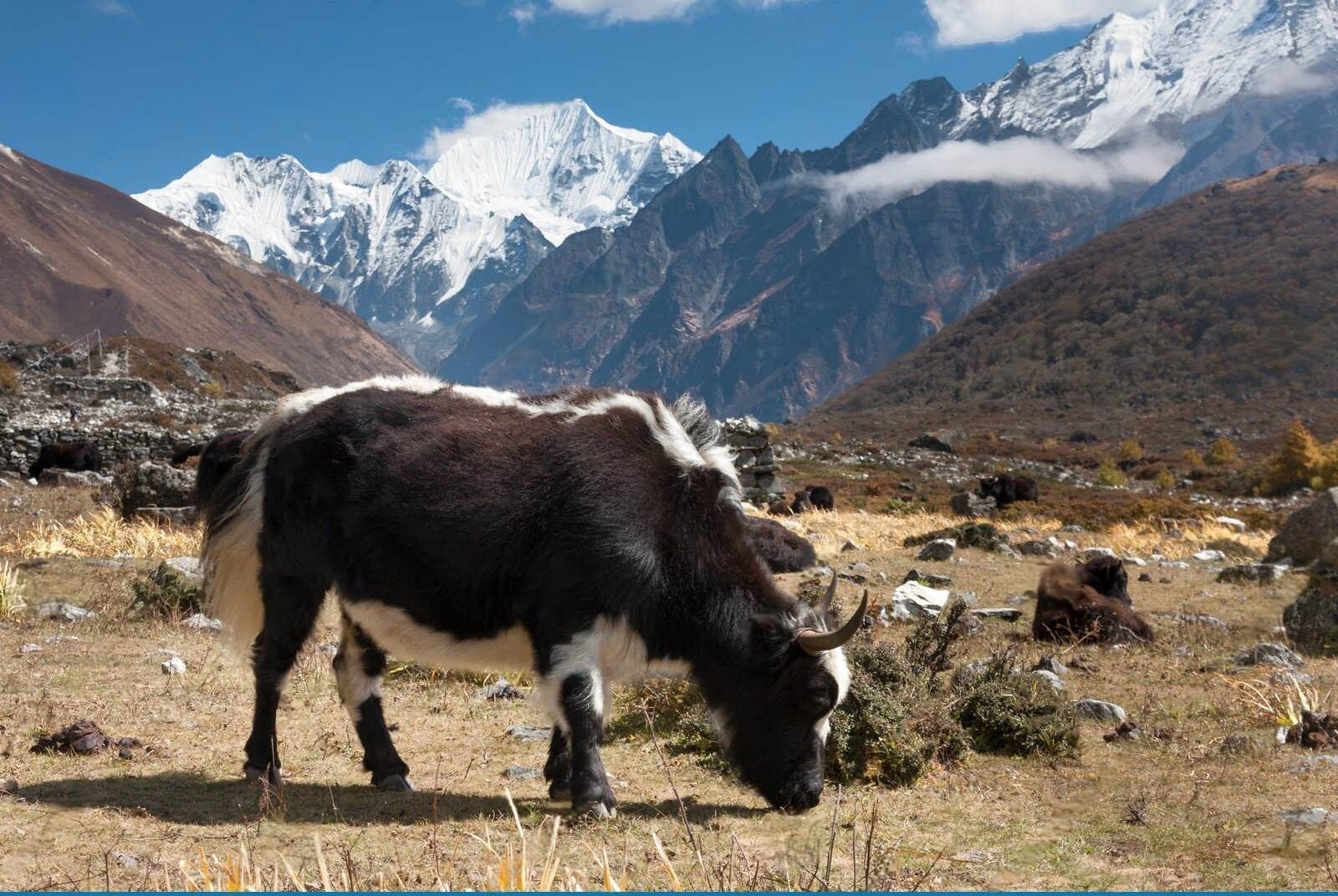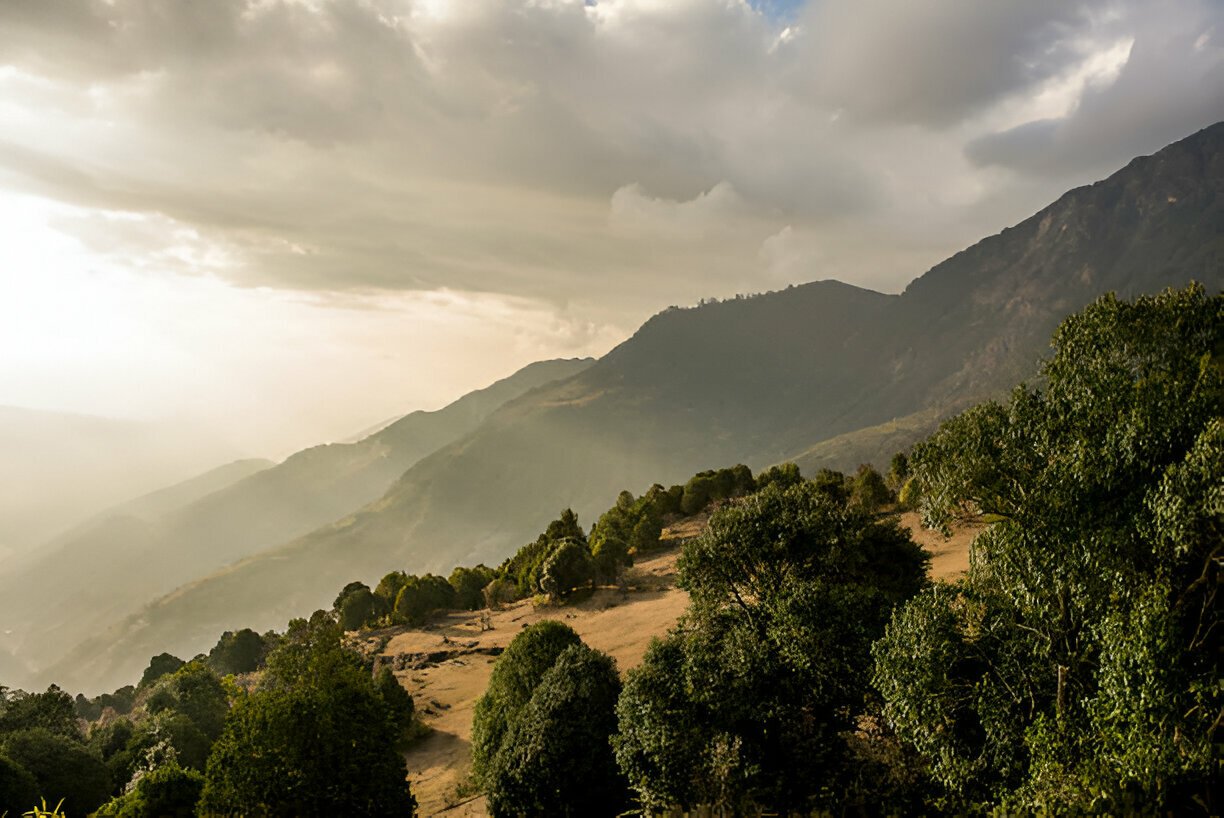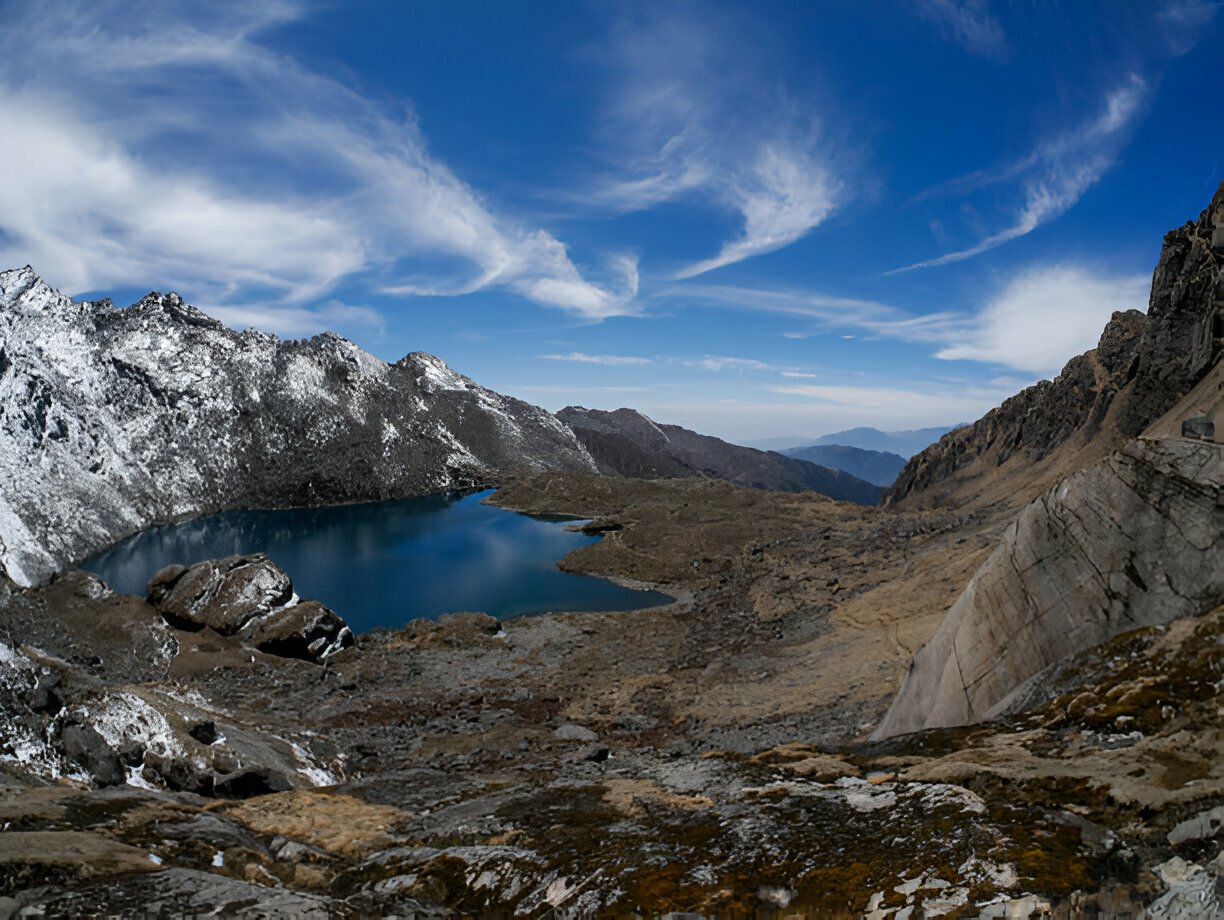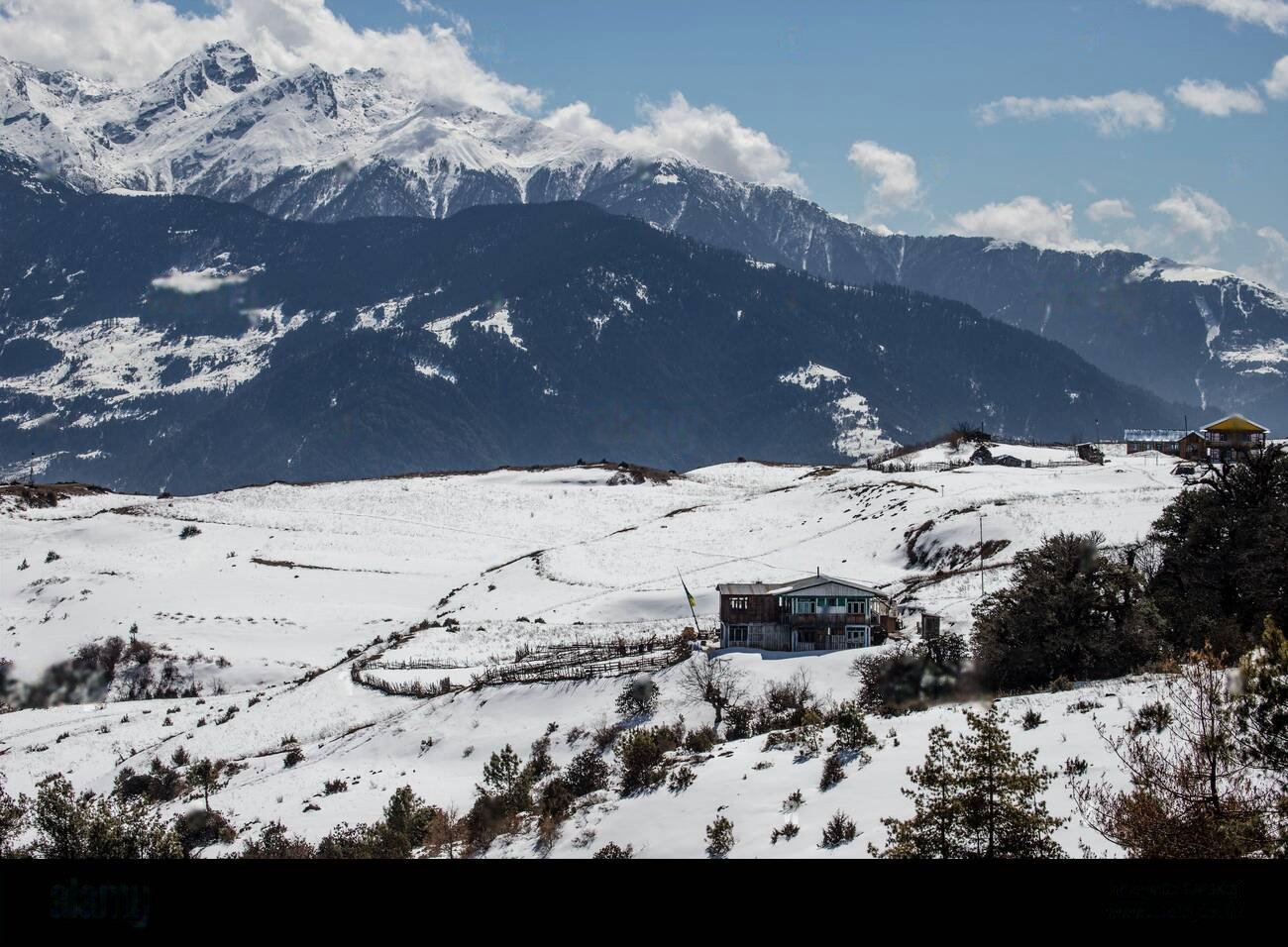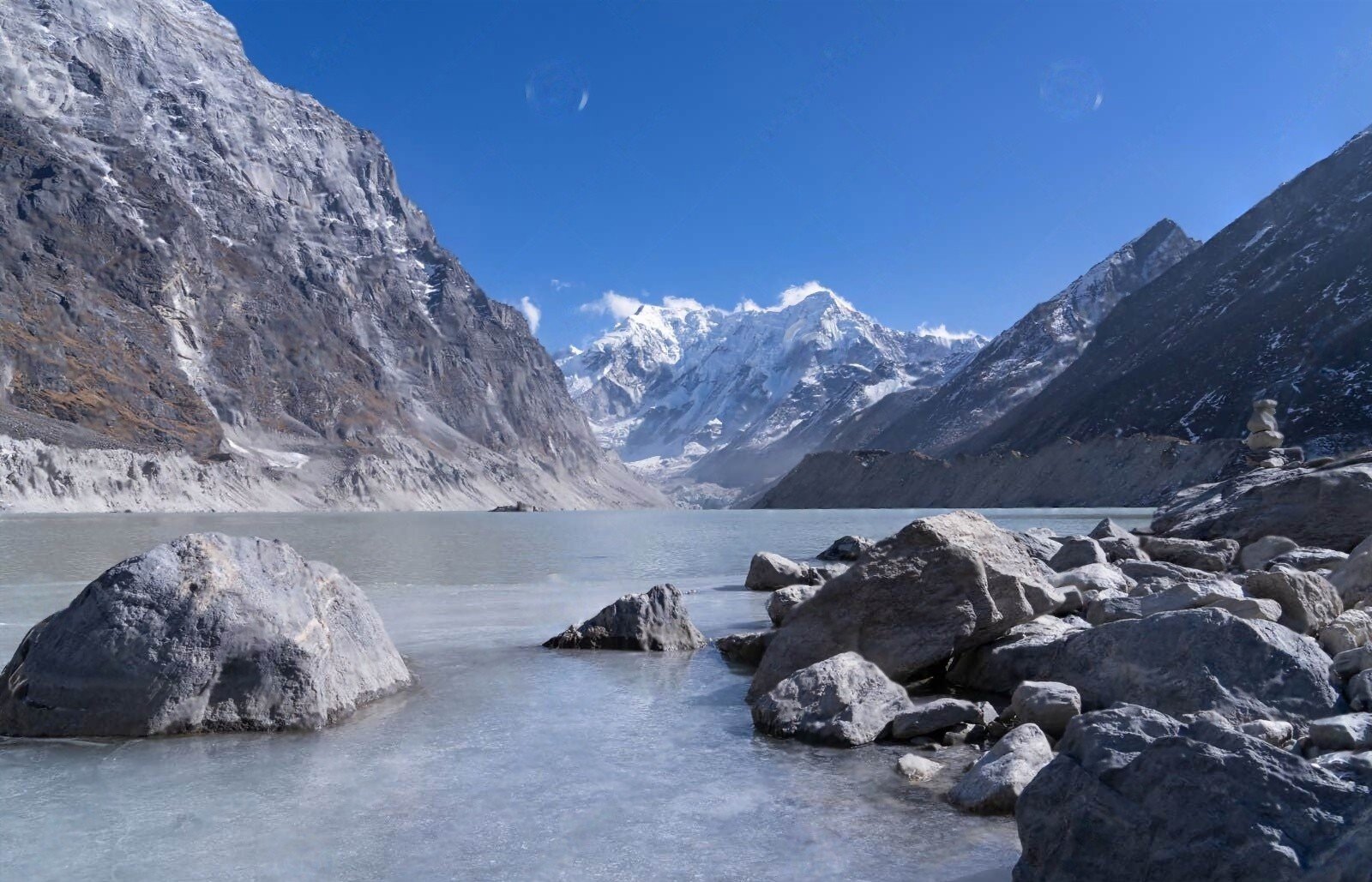 About this Trip
About this Trip
The Rolwaling Valley Trek represents a journey back in time, offering an increasingly rare experience in Nepal. It is a trek through magnificent Himalayan scenery without encountering large groups of other tourists. What makes this trek extraordinary is its perfect balance of natural splendor, cultural authenticity, and adventurous challenge.
As you ascend from the lush, terraced fields of the lower valley into the high alpine terrain, the landscape transforms dramatically. The narrow valley, hemmed in by towering peaks, creates a sense of intimate connection with the mountains that more open regions cannot match. The trail follows the tumultuous Rolwaling River, crossing numerous suspension bridges and passing through forests where sunlight filters through ancient rhododendron trees, creating an almost mystical atmosphere.
The cultural dimension of this trek is particularly special. The Rolwaling Valley is home to Sherpas whose way of life has remained remarkably traditional due to the region's isolation. The villages you'll encounter, particularly Bedding and Na, offer glimpses into Himalayan life largely untouched by modern influence. Ancient monasteries dot the landscape, their prayer flags fluttering against the backdrop of snow-capped peaks, and local festivals still follow centuries-old traditions.
Physically, the trek challenges participants with sustained high-altitude hiking and rapidly changing weather conditions. The relatively difficult access and limited infrastructure mean trekkers must be more self-sufficient and prepared than on more established routes. This remoteness, however, is precisely what makes the journey so rewarding – each view earned through effort feels like a personal discovery rather than a photographic opportunity shared with dozens of other trekkers.
Perhaps most uniquely, the Rolwaling Valley offers a sense of exploration that has been lost on Nepal's more popular trekking routes. While following established trails, trekkers often experience the exhilarating feeling of venturing into the unknown, of seeing vistas that relatively few foreign eyes have witnessed. This combination of physical challenge, cultural immersion, and pioneering spirit creates an adventure that lingers in memory long after the journey's end.
The Rolwaling Valley Trek represents a journey back in time, offering an increasingly rare experience in Nepal. It is a trek through magnificent Himalayan scenery without encountering large groups of other tourists. What makes this trek extraordinary is its perfect balance of natural splendor, cultural authenticity, and adventurous challenge.
As you ascend from the lush, terraced fields of the lower valley into the high alpine terrain, the landscape transforms dramatically. The narrow valley, hemmed in by towering peaks, creates a sense of intimate connection with the mountains that more open regions cannot match. The trail follows the tumultuous Rolwaling River, crossing numerous suspension bridges and passing through forests where sunlight filters through ancient rhododendron trees, creating an almost mystical atmosphere.
The cultural dimension of this trek is particularly special. The Rolwaling Valley is home to Sherpas whose way of life has remained remarkably traditional due to the region's isolation. The villages you'll encounter, particularly Bedding and Na, offer glimpses into Himalayan life largely untouched by modern influence. Ancient monasteries dot the landscape, their prayer flags fluttering against the backdrop of snow-capped peaks, and local festivals still follow centuries-old traditions.
Physically, the trek challenges participants with sustained high-altitude hiking and rapidly changing weather conditions. The relatively difficult access and limited infrastructure mean trekkers must be more self-sufficient and prepared than on more established routes. This remoteness, however, is precisely what makes the journey so rewarding – each view earned through effort feels like a personal discovery rather than a photographic opportunity shared with dozens of other trekkers.
Perhaps most uniquely, the Rolwaling Valley offers a sense of exploration that has been lost on Nepal's more popular trekking routes. While following established trails, trekkers often experience the exhilarating feeling of venturing into the unknown, of seeing vistas that relatively few foreign eyes have witnessed. This combination of physical challenge, cultural immersion, and pioneering spirit creates an adventure that lingers in memory long after the journey's end.
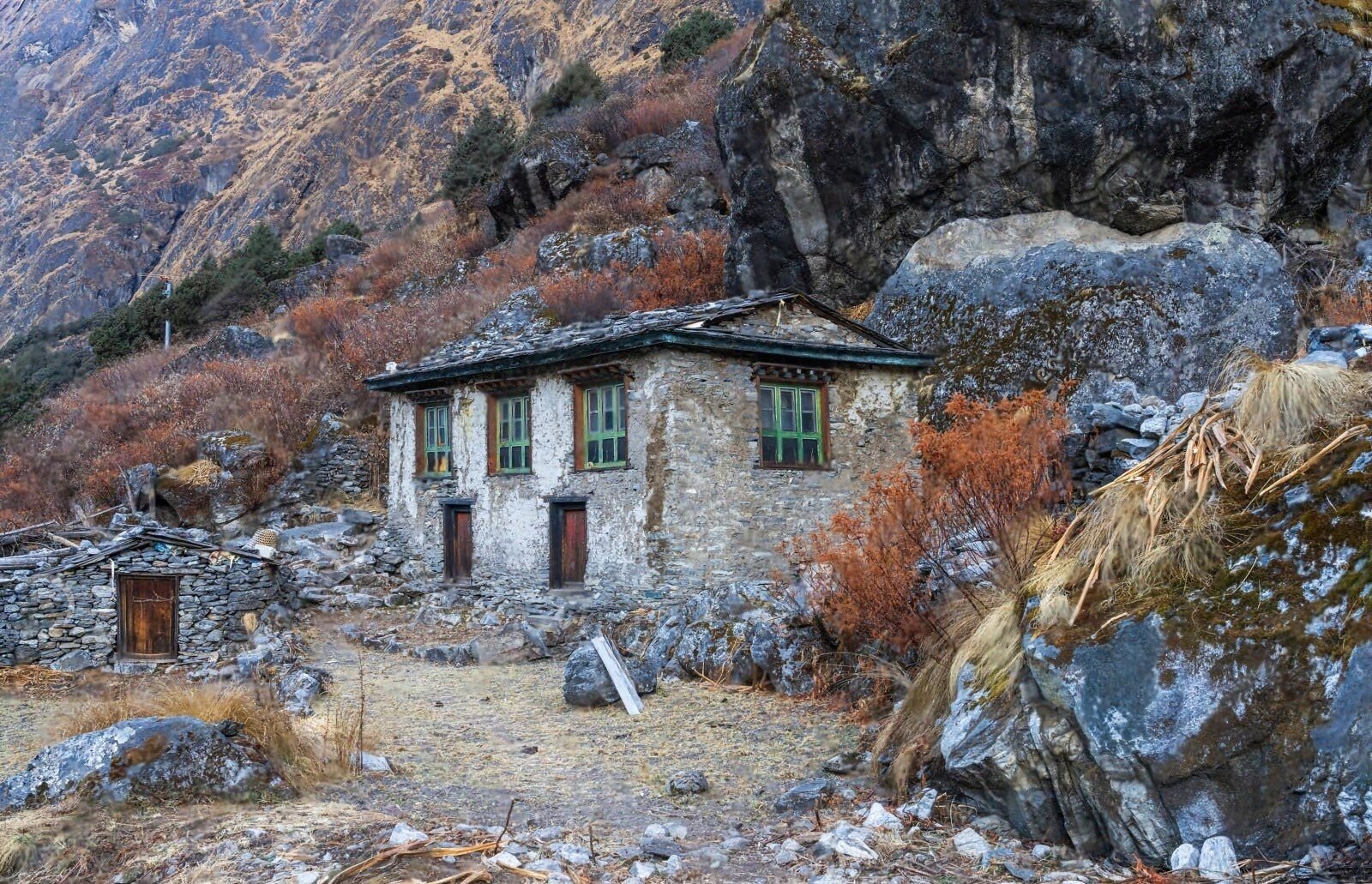
From $2,050
$2,100
Price Varies from Group Size
Success
Here goes about why the success toast occurred.
 Itinerary
Itinerary
The Rolwaling Trek is a remote and adventurous journey through the hidden valleys of eastern Nepal, offering stunning views of Gauri Shankar and access to the high-altitude Tashi Lapcha Pass.
Arrival in Kathmandu (1,400m)
Our dedicated team member will greet you at Tribhuvan International Airport and transfer you to your hotel in Kathmandu. After check-in, our guide will provide a brief orientation session about your trek and answer any questions you may have. We offer assistance with any last-minute gear purchases at local shops and will handle all logistics for your stay.
Experience Highlights:
- Free time to explore the bustling streets of Thamel
- Visit nearby temples or simply rest after your flight
- For energetic travelers: Quick visit to Swayambhunath (Monkey Temple)
- Enjoy panoramic views of Kathmandu Valley
- Catch your first glimpse of the distant Himalayan peaks
Kathmandu Exploration and Trek Preparation (1,400m/4,593ft)
After breakfast at your hotel, our cultural guide will take you on a guided tour of Kathmandu's UNESCO World Heritage sites. We'll organize your trekking permits and conduct a comprehensive gear check to ensure you're fully prepared. In the evening, we'll host a welcome dinner featuring authentic Nepali cuisine where you'll meet your trekking guide and fellow travelers.
Experience Highlights:
- Perfect blend of cultural immersion and trek preparation
- Explore UNESCO World Heritage sites: Pashupatinath Temple, Boudhanath Stupa, and Patan Durbar Square
- Gain insights into Nepal's rich cultural heritage
- Acclimatize to the local timezone and environment
- Listen to fascinating stories about the mountains from our experienced guides
- Mental preparation for the adventure ahead
Drive from Kathmandu to Singati (950m/3,117ft)
We'll arrange your early morning departure in a comfortable private vehicle. Our experienced driver will navigate the winding mountain roads while you enjoy scenic views. We'll make several comfort stops along the way, including a lunch break at a local restaurant. Upon arrival in Singati, our team will help you check into a comfortable teahouse and provide a briefing about the beginning of your trek the following day.
Experience Highglight:
- Journey along the Arniko Highway out of Kathmandu Valley
- Experience the changing landscape from urban bustle to rural farming communities
- Pass through small towns and terraced farmlands
- Witness everyday rural Nepali life
- Cross the Sun Koshi river
- Enter the gateway to the Rolwaling region at Singati
- Prepare for the beginning of your trekking adventure
Trek from Singati to Jagat (1,440m/4,724ft)
Following breakfast, our team will prepare for the day's trek. Your guide will set an appropriate pace, introducing you to the proper trekking rhythm while pointing out interesting features of the landscape and culture. We'll arrange a nutritious packed lunch to be enjoyed en route, and upon arrival in Jagat, we'll handle your teahouse accommodation arrangements.
Experience Highlights:
- Begin your trek following the Tama Koshi River valley
- Walk through beautiful terraced fields and small villages
- Cross-suspension bridges over rushing mountain streams
- Encounter the diverse flora of lower-altitude Himalayan regions
- Enjoy the relatively gentle terrain as you acclimatize to trekking
- Arrive in the charming village of Jagat
- Experience your first night on the trail in an authentic mountain teahouse
Jagat to Simigaon (2,100m/6,890ft)
Our team will prepare a hearty breakfast to fuel your challenging day ahead. Your guide will carefully monitor the pace, ensuring proper acclimatization as you gain significant elevation. We'll provide regular snack and rest breaks, with a scenic lunch stop. Upon reaching Simigaon, we'll help you check into your accommodation and provide an evening briefing about the next day's trek.
Experience Highlights:
- Trek through dense forests and terraced fields
- Climb steadily with increasingly impressive views
- Cross the Tama Koshi river on a suspension bridge
- Encounter the first Buddhist prayer flags and mani walls
- Enter the culturally Tibetan-influenced region
- Notice the transition to Sherpa and Tamang settlements
- Visit the Buddhist Gompa in Simigaon
- Enjoy your first views of snow-capped peaks in the distance
Simigaon to Dovan (3,000m/9,843ft)
Following an early breakfast, our team will lead you on this challenging section of the trek. Your guide will set a measured pace as you gain significant elevation. We'll arrange a scenic rest stop with hot tea and snacks midway through the climb. Upon arrival at Dovan, we'll ensure you have a comfortable place to rest and recover from the day's exertion.
Experience Highlights:
- Begin a steeper climb through rhododendron and pine forests
- Cross streams fed by glacial meltwater
- Notice the changing vegetation as you gain altitude
- Spot various Himalayan birds and possibly wildlife
- Enter the true wilderness of the Rolwaling region
- Feel the air getting noticeably thinner
- Arrive at the small settlement of Dovan
- Experience magnificent stargazing on clear nights
Dovan to Beding (3,690m/12,106ft)
Our team will monitor your health more vigilantly as you ascend to higher altitudes. We'll prepare oxygen equipment and first aid supplies for immediate use if needed. Your guide will set an appropriate pace to conserve energy while ensuring steady progress. Upon arrival at Beding, we'll arrange comfortable accommodation and provide hot drinks and nutritious meals to help with acclimatization.
Experience Highlights:
- Follow the valley floor alongside the Rolwaling River
- Walk through beautiful alpine meadows
- Enjoy increasingly dramatic mountain views
- Pass through stands of ancient juniper trees
- Enter Beding, the largest settlement in the Rolwaling Valley
- Visit the ancient Beding Monastery
- Meet local Sherpa people whose culture remains largely untouched by tourism
- Enjoy views of surrounding peaks including Melungtse II
Acclimatization Day in Beding (3,690m/12,106ft)
Our team arranges a carefully planned acclimatization schedule, including a morning hike to higher elevations. We'll organize a visit to nearby viewpoints and provide detailed information about altitude sickness prevention. Our guides remain available throughout the day for questions and will conduct evening health checks to ensure everyone is adapting well to the altitude.
Experiences Highlights:
- Follow the mountaineering principle of "climb high, sleep low"
- Embark on a day hike to nearby ridges for spectacular views
- Visit yak pastures above the village
- Explore the authentic Sherpa village of Beding
- Interact with locals and learn about their traditional mountain lifestyle
- Rest and recover while adapting to the altitude
- Prepare for the challenging days ahead
Beding to Na (4,180m/13,714ft)
As you approach very high altitudes, our team implements strict health monitoring protocols. Your guide will set an extremely measured pace and encourage frequent hydration. We'll prepare high-calorie meals to combat the increased metabolism at altitude and ensure your accommodation in Na is as comfortable as possible in these remote conditions.
Experience Highlights:
- Trek through a wide valley with stunning alpine scenery
- Cross beautiful meadows dotted with grazing yaks
- Pass small summer herding settlements
- Notice the landscape becoming increasingly barren
- Enjoy magnificent views of Chobuje and other peaks
- Arrive at Na, the summer settlement of Beding villagers
- Experience the raw beauty of high Himalayan wilderness
- Feel the growing anticipation of approaching Tso Rolpa Lake
Na to Tso Rolpa Lake (4,580m/15,026ft) and back to Na
Our team will wake you early with hot tea delivered to your room. We'll provide energy-dense breakfast and snacks for the challenging day ahead. Your guide will set an appropriate pace to reach Tso Rolpa Lake while ensuring everyone's safety. At these extreme altitudes, our guides carry pulse oximeters to monitor oxygen levels and are trained for emergency response if needed.
Experience Highlights:
- Begin this landmark day with a challenging trek up the valley
- Navigate moraines and rocky terrain
- Follow the route alongside the Rolwaling Glacier
- Arrive at the turquoise waters of Tso Rolpa, one of Nepal's largest glacial lakes
- Experience the dramatic landscape of hanging glaciers and towering peaks
- View Gauri Shankar (7,134m) and other magnificent mountains
- Learn about the lake's significance and the threat of glacial lake outburst floods
- Return to Na for a well-deserved rest
Na to Beding (3,690m/12,106ft)
Our team will prepare a relaxed breakfast before beginning your descent. Your guide will lead at a comfortable pace as you descend to lower elevations. We'll arrange a special lunch in Beding where our staff will celebrate your achievement of reaching Tso Rolpa Lake.
Experience Highlights:
- Enjoy a rewarding descent through now-familiar territory
- Experience dramatic improvement in breathing and energy levels
- Take time to appreciate views you might have missed on the ascent
- Look for wildlife that is more active in the morning hours
- Return to the relative comfort of Beding
- Enjoy a relaxing afternoon in the village
- Visit the monastery or interact with local residents
Beding to Dokhang (2,791m/9,157ft)
Our team will organize an early breakfast to allow plenty of time for the day's trek. Your guide will lead you safely through the changing terrain, pointing out interesting features you may have missed on the ascent. Upon arrival in Dokhang, we'll handle your teahouse accommodation arrangements and prepare a special dinner.
Experience Highlights:
- Begin the journey back down the Rolwaling Valley
- Experience a sense of accomplishment mixed with nostalgia
- Observe the changing vegetation as you descend to lower altitudes
- Notice how remarkably easy the trail feels compared to your ascent
- Take time to photograph scenes with better lighting than during the ascent
- Arrive at the small settlement of Dokhang
- Reflect on your high-altitude achievements
Dokhang to Simigaon (2,100m/6,890ft)
Our team will prepare a hearty breakfast before beginning your trek to Simigaon. Your guide will set a comfortable pace, allowing time to fully appreciate the surrounding beauty. In the evening, we'll host a farewell celebration with your porters and guides, providing an opportunity to express gratitude to these essential team members.
Experience Highlights:
- Continue your descent through changing landscapes
- Pass through small villages and terraced fields
- Enjoy increasingly lush vegetation
- Cross several streams and suspension bridges
- Notice the air becoming warmer and richer as you descend
- Return to the charming village of Simigaon
- Celebrate your journey with the trekking team
Simigaon to Singati (950m/3,117ft)
Our team will organize an early breakfast to allow plenty of time for the long day's trek. Your guide will lead you safely down the steep sections, ensuring a comfortable pace. Upon arrival in Singati, we'll prepare for tomorrow's return to Kathmandu and celebrate your successful completion of the Rolwaling trek.
Experience Highlights:
- Complete your circuit in the Rolwaling region
- Enjoy the relative ease of breathing at lower altitudes
- Pass through villages with traditional farming practices
- Cross the final suspension bridges of your journey
- Return to Singati, where your trek began
- Reflect on the remarkable journey through one of Nepal's most pristine regions
- Prepare for your return to Kathmandu
Drive from Singati to Kathmandu (1,400m/4,593ft)
Our team will arrange your transport back to Kathmandu in a comfortable private vehicle. Upon arrival in Kathmandu, we'll transfer you to your hotel and assist with luggage. You'll have free time in the afternoon, with optional spa services available to soothe tired muscles. In the evening, we'll host a final celebration dinner at a premier restaurant in Kathmandu.
Experience Highlights:
- Board your private vehicle for the return journey to Kathmandu
- Experience the surreal contrast between mountain wilderness and bustling city
- Appreciate simple luxuries of hot showers, varied cuisine, and soft beds
- Take time for souvenir shopping in Thamel
- Process and reflect on your remarkable achievement
- Share stories with fellow trekkers during a final celebration dinner
- Begin organizing photos and memories from your adventure
Departure Day
Depending on your flight time, our team will arrange airport transfers and assist with check-in procedures. We'll provide information about departure requirements and help with any last-minute souvenir purchases. Our staff will ensure you depart with all trek certificates, photos, and memories properly secured.
Experience Highlights:
- Conclude your Himalayan adventure
- Depart with photographs, memories, and personal growth
- Reflect on challenging yourself in one of Nepal's most pristine environments
- Carry memories of the magnificent Rolwaling Valley
- Treasure experiences of the journey, culture, and remarkable people
- Take home a transformative experience that provides perspective beyond the mountains
- Begin planning your next adventure with us
- Bid farewell to Nepal with a heart full of extraordinary experiences
 Services
Services
Includes
- Specialized bilingual guide experienced in remote trekking regions
- Private Transport (jeeps) between Kathmandu and Singati
- All necessary camping equipment for nights at Tsho Rolpa
- Daily meals on the trek: breakfast, lunch, and dinner
- Services of an experienced guide and porter during the trek
- All essential trekking permits, including special permits for Rolwaling region
- Accommodation throughout the trek (teahouses where available, camping where necessary)
Excludes
- Additional accommodation due to unexpected delays or weather conditions
- Comprehensive travel and medical insurance for the trek
- Gratuities for the guides, porters, and trekking support staff
- International flights and entry visa fees for Nepal
- Personal trekking equipment and gear (sleeping bags, jackets, etc.)
- Extra food and drinks beyond the standard meals provided
- Helicopter evacuation in case of emergency (should be covered by your insurance)
 Good to Know
Good to Know
Train 3-4 months in advance with particular focus on uphill endurance; bring extra supplies as amenities in teahouses are extremely basic; pack for variable conditions as weather changes rapidly; carry sufficient cash as there are no ATMs in the region; water purification is essential; expect limited electricity for charging devices; prepare for additional days in case of weather delays or acclimatization needs; and respect local customs in this culturally traditional area.
Wildlife Encounters
While trekking, keep an eye out for:
Himalayan tahr (wild mountain goats), Red panda (in forest regions), Musk deer. Himalayan black bear (rare sightings), Snow leopard (extremely rare sightings), Various pheasant species including the Danphe (Nepal's national bird), Lammergeier (bearded vulture), Alpine birds including ravens, choughs, and snowcocks, Diverse butterfly species in lower elevations
 Reviews
Reviews
 FAQs (Frequently Asked Questions)
FAQs (Frequently Asked Questions)
Your queries are answered.
Why is the Rolwaling Valley less visited than other trekking regions?
The difficult access (poor roads, no domestic flights), limited teahouse infrastructure, requirement for camping equipment in some sections, and special permit requirements have kept tourist numbers low. This is precisely what makes it appealing to adventurous trekkers seeking a more authentic experience.
Do I need special permits for this trek?
In addition to the standard Gaurishankar Conservation Area Permit (GCAP), the Rolwaling Valley requires a special restricted area permit that must be arranged through a registered trekking agency. Solo trekking is not permitted in this region.
What is the best time of year for this trek?
April to early June and October to November offer the best conditions. Spring features spectacular rhododendron blooms and warmer temperatures, while autumn provides the clearest mountain views. The monsoon season (June-September) brings leeches and landslide risks, while winter (December-February) can see passes closed by snow.
What type of accommodation can I expect?
Basic teahouses exist in most villages up to Na, though they are considerably more rustic than those in popular trekking regions. Above Na, camping is necessary. Facilities are very simple - expect shared rooms, limited or no hot water, and basic toilet facilities.
Is it possible to extend this trek?
Yes, experienced trekkers with technical climbing skills can extend the journey by crossing the challenging Tashi Lapcha Pass (5,755m) into the Khumbu (Everest) region. This extension adds approximately 5-7 days and requires alpine climbing equipment, experienced guides, and excellent acclimatization.
How does altitude sickness prevention differ for this trek?
The itinerary includes essential acclimatization days at Beding and Na. Beyond standard precautions (ascending slowly, staying hydrated), the remote nature of the trail means medical facilities are extremely limited. Carrying altitude sickness medication is essential, and having prior high-altitude experience is highly recommended.
Is it possible to trek independently in Rolwaling?
No, regulations require trekkers to obtain permits through registered agencies and be accompanied by licensed guides. The remote nature of the region also makes independent trekking inadvisable from a safety perspective.
How reliable is the WiFi and phone connectivity?
Virtually non-existent beyond Singati. Some villages may have emergency satellite phones, but trekkers should plan to be completely disconnected during the journey. Notify family and friends of your itinerary before departing.
How much should I budget for the trek?
Beyond the package cost (which is typically higher than more popular routes due to special permits and transportation challenges), budget approximately $15-20 per day for any additional expenses. Prices in teahouses increase significantly with altitude due to the difficulty of transporting supplies.
What additional gear is needed compared to more popular treks?
Pack more comprehensively than for standard treks, including extra batteries/power banks (limited charging facilities), more extensive first aid supplies, quality water purification systems, and potentially camping gear depending on your specific itinerary. A higher-quality sleeping bag is essential as teahouses have minimal heating.
Rolwaling Valley Trek
from $2,050 per adult




